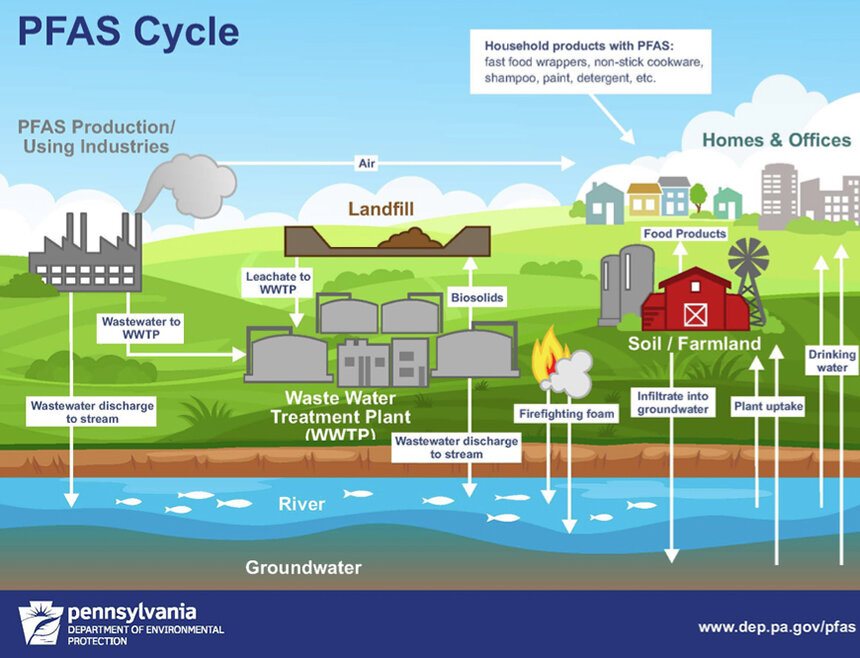URI Birder Adds Distinguished Award to His ‘Life History of a Naturalist’
December 11, 2023
Peter Paton, a longtime faculty member in the University of Rhode Island’s College of the Environment and Life Sciences, was recently honored by the Rhode Island Natural History Survey with its Distinguished Naturalist Award.
The Natural Resources Science (NRS) department chair studies the conservation biology and natural history of wild vertebrates with an emphasis on threatened and endangered species, such as the piping plover.
In addition to his department chair responsibilities and his ornithological research, the Richmond resident teaches field courses in ornithology, wetland wildlife management, and management of migratory birds.
Paton also invests a great deal of time helping local communities develop a deeper appreciation for nature, through walks and talks for organizations such as the Audubon Society of Rhode Island, the Watch Hill Conservancy, and the U.S. Fish & Wildlife Service.
“Peter is indeed a distinguished naturalist,” said Scott McWilliams, an NRS professor. “He has studied a wide diversity of critters on so many fronts, a testament to his curiosity, willingness to study animals wherever they may roam, and love for fieldwork.”
Throughout his career, including the past three decades at URI, Paton has been a leading researcher and an influential teacher. He worked as a federal wildlife biologist and contract biologist for 10 years before joining the URI faculty in 1995.
Colleagues and friends have noted he brings people out to the field to directly experience “incredible natural phenomena in their own backyard,” such as the spring migration of frogs and toads and the banding of saw-whet owls and songbirds during fall migration.
URI colleague and professor emeritus Keith Killingbeck said Paton has made significant contributions in enhancing public awareness of the importance of local biota.
Art Gold, an NRS colleague and professor emeritus, noted, “Peter has instilled a love of birds and wetland habitats in hundreds of students. His field courses are always oversubscribed and his students come back from each field trip bubbling with excitement.”
Paton has studied snowy plovers on the Great Salt Lake in Utah, the effects of timber harvesting on spotted owls and marbled murrelets at the Redwood Sciences Laboratory in California, egrets as an airstrike hazard in Hawaii, endangered birds on the Hawaiian islands, and birds breeding in Denali National Park in Alaska.
Closer to home, he has written about the ecology of Block Island, amphibian breeding in Rhode Island ponds, glossy ibis’ use of Rhode Island farmland, breeding birds in Boston Harbor, migration habits of spotted salamanders on southern New England golf courses, salt marsh restoration in Narragansett, and the impacts of the 1996 North Cape oil spill on coastal Rhode Island.
He visits well-hidden vernal pools on fall nights in search of marbled salamanders, the only autumn-breeding salamander in New England. Marbled salamanders, which grow to about 3.5-4.25 inches, are the second-largest salamander in the region, after the spotted salamander.
Paton’s involvement in the long-term study of terns on Great Gull Island in Long Island Sound has shown students, volunteers, and other scientists how to conduct conservation science, with the added spectacle of thousands of breeding colonial birds and the demonstrated fragility of such a system.
He is a member of the Watch Hill Conservancy science advisory board, and co-authored the recently published Second Atlas of Breeding Birds in Rhode Island.
At the Rhode Island Natural History Survey’s awards presentation, attendees were entertained by Paton’s presentation — “The Life History of a Naturalist” — about his interesting career.
“I was incredibly honored to receive this year’s award,” he said. “There’s been some very good naturalists honored. It’s really nice to be ranked in their company.”
Paton, who grew up in Colorado, said he has always loved the outdoors. At Lewis & Clark College in Portland, Ore., he had the opportunity to take his first natural history class, which proved to be a life-altering decision.
“I just got hooked,” he said. “That one class ended up changing my life.”
He earned his Ph.D. in wildlife biology from Utah State University and a master’s in wildlife biology from Colorado State University.
He even introduced new URI president and his wife to Rhode Island’s avian wonders when they arrived in Rhode Island two winters ago. Marc and Mary Parlange joined Paton on a field trip to the Sachuest National Wildlife Refuge in Middletown on a chilly morning a few months into their first year at the university.
“I hooked President Parlange, too,” he said.
The Rhode Island Natural History Survey called Paton’s “enthusiasm for fieldwork infectious,” and noted he has developed effective collaborative relationships with a variety of agencies and non-governmental organizations that ensure the most productive outcomes.
“Seeing him just as excited about his 10,000th yellow warbler or his 100,000th wood frog tadpole, as he probably was about his first, never fails to thrill the members of the public with which he is engaging,” according to the Rhode Island Natural History Survey.



